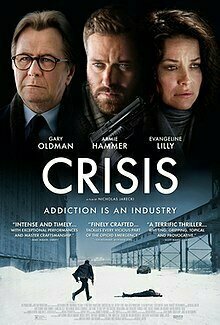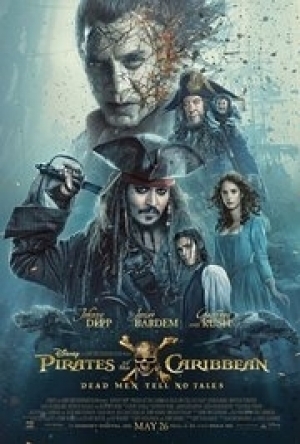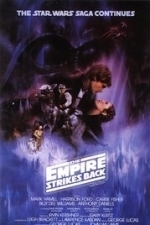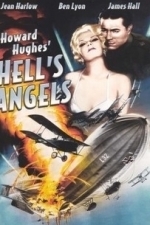
Mr Green Mobile Casino
Games and Entertainment
App
Voted ‘Online Gaming Operator of the Year’, Mr Green’s casino App is a must-download if you...
Sarah (7800 KP) rated Crisis (2021) in Movies
Feb 19, 2021
The main purpose of Crisis appears to be highlighting two entirely juxtaposed real life issues with opioids - the illegal smuggling and import of street drugs and the completely legal yet questionable drugs introduced by drug companies with full support of the government. For most, neither of these stories should be particularly surprising as they're fairly common knowledge and have been featured in countless films and documentaries over the years, although I think this may be the first time the two stories have been shown together in a film. And for Crisis this really works - showing the two contrasting issues makes for a more interesting and unique story rather than concentrating solely on one that we've seen many times before, especially as its split into three separate narratives.
However, the problem with Crisis is that not all of the narratives are as engaging as intended. Evangeline Lilly puts in a wonderful and emotional performance as architect and mother Claire, but her narrative becomes a little unrealistic as she becomes bent on revenge at those responsible for involving her son in the drugs underworld. And unfortunately Armie Hammer's narrative as undercover federal agent Jake is nothing original, with a smuggling operation and drugs bust that we've seen in many other films, some of which I'm afraid have done it a lot better. The most interesting narrative though is that of Gary Oldman as Dr Tyrone Brower, whose struggle over whether to tell the truth about a new dangerous drug or take the money from his drug company employers is a surprisingly thrilling morality tale. It's helped by a superb turn from Oldman himself and a wonderful supporting role from Greg Kinnear (who I've adored since 1997's As Good As It Gets), and the verbal sparring scenes between Brower and Kinnear's university Dean are probably the best in the film. It's a shame however that Luke Evans isn't given as much to do with his part in this narrative, even with his questionable American accent.
The biggest problem I had with all of the narratives is that unlike similar films that intertwine related narratives that eventually intersect dramatically (think 2006's Best Picture Oscar winner Crash), the narratives here don't all come together in the way I was expecting, which was rather disappointing.
Cinematography-wise, director and writer Jarecki does a good job as the film looks and feels good, and really highlights the US and Canadian settings. The soundtrack only adds to the overall tense and suspenseful feel of the film, although it does feature the typical pulsing, drum beat style that seems to be standard for a modern thriller. And the script, while possibly a little clichéd especially around the drugs bust and smuggling, is good and with his supporting acting role as Jake's fellow DEA agent Stan, Nicholas Jarecki could be one to watch in future.
Overall, Crisis is a good thriller that tells the story of well-known drug issues in a different way and does well in highlighting real life concerns. For the most part it succeeds in bringing an interesting set of narratives together for a fairly gripping albeit slightly long film, and despite my preconceptions about how its intersecting storylines should play out, it is an enjoyable watch, although for the most part thanks to the talents of Gary Oldman.

Ultimate Teen Patti — UTP
Games
App
Teen Patti is the most thrilling card game and Ultimate Teen Patti is the number one Teen Patti app...

My Boo Virtual Pet & Mini Game
Games and Entertainment
App
Meet Boo, your very own virtual pet! Enjoy countless hours of fun in this addictive and entertaining...
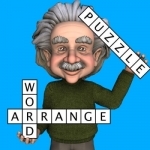
Word Fit Puzzle
Games and Entertainment
App
It’s time to slash and burn your way through the competition of Word Fit Puzzle! It’s more like...
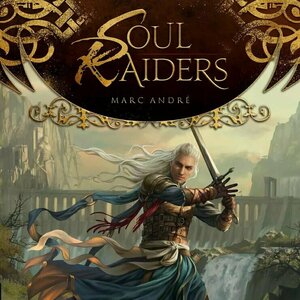
Soul Raiders
Tabletop Game
Tomorrow is the day: you will pledge yourself to the ancestral order of the Soul Raiders, in the...

Stratego® Single Player
Games and Entertainment
App
Play the best Strategy game ever! Stratego® Official Single Player from Jumbo is all about good...
Connor Sheffield (293 KP) rated Pirates of the Caribbean: Dead Men Tell No Tales (2017) in Movies
May 27, 2017
The new cast included the young and beautiful Kaya Scodelario (Maze Runner / Skins / Moon) as Carina Smith, alongside the also young Brenton Thwaites (Home and Away / Maleficent / Gods of Egypt) as Henry Turner, the son of Will Turner portrayed by Orlando Bloom, who returns to this instalment as only a minor character, but one that sets the film in motion. Both of these new young performers excel in their roles and deliver a performance that is reminiscent of their predecessors in the franchise. Watching these two was like watching Orlando Bloom and Kiera Knightly in The Curse of the Black Pearl, with moments that reminded more so of their evolved relationship in the Dead Man’s Chest. Though Carina and Henry are not (yet) together throughout the film, you can clearly see that their shared goal to reach a mysterious legend that may or may not be true, in honour of their father’s, brings them closer and closer and time goes by and events begin to unravel.
Our new villain, Captain Salazar, is portrayed by Javier Bardem (No Country For Old Men / Skyfall / The Sea Inside) and brilliantly portrayed at that. He’s menacing and ruthless, and very haunting. His goal is clear and he does not rest until he finds Jack Sparrow. This film franchise has seen plenty of cursed men chasing the drunken idiot Captain all over the world, but Salazar is one thing the others were not….he is not a pirate. In fact he is the exact opposite, he was a naval captain for the Spanish and hunted pirates. This was his life, and this was his curse. His hatred of Jack Sparrow runs deeper than any villain set before him and this is what makes the film an exciting experience.
My only issue that whilst it is hilarious and I continued to laugh, this film seemed to be bursting at the seems with jokes and gags which sometimes felt forced. Trying to live up to the humour of the first film, but instead of always being perfectly timed to the right moments now and then, it seems to be in almost every conversation. This doesn't ruin the film in any aspect, just something I picked up on.
The fifth film is, in my opinion, definitely one of the better of the franchise. It excels in being a hilarious, exciting, action packed fantasy film, which is great for an audience of almost any age. Being a Disney film, it is suitable for children under parental guidance and older audiences from the teenagers to the elderly.
The effects get better with each instalment in the franchise and this film proves it with some beautiful imagery of the seas and the events that take place. The films makeup and set design are also incredible and fantastic to witness, as we see new treasures and new ships that take you to a whole new world, right there in the cinema.
If you’re going to watch this film, which I highly recommend, then do so at the cinema because like most films, your experience with the film will not be the same if you don’t watch it on the big screen. I saw this film in IMAX and it was stunning and incredible and just an absolutely thrilling experience.
Salazar’s Revenge (or Dead Men Tell No Tales, as it’s known in America) is most certainly going to be one of my favourite films of the year.
Puke Flyswatter (7 KP) rated Star Wars: Episode V – The Empire Strikes Back (1980) in Movies
Sep 12, 2017
George Lucas, ("the daddy" and brains behind the series of stories of intergalactic war and oppression), had reportedly suffered from exhaustion to the point of near breakdown- even suffering a near heart attack and so decided for the sake of his health and mental well-being not to helm this project which led to Irvin Kershner taking the reins instead.
Kershner's change in approach is apparent throughout the movie and even from the opening scene on Hoth- the barren ice planet- there is a palpably hollow and sombre overall feel which is more than likely deliberate so as to reflect the apparent futility and hopelessness of the protagonists’ struggle. This cleverly generated more empathy toward the characters, meaning the viewer became more invested in the outcome of the story.
The scope and scale of each scene is also cleverly used to give the viewer insight into the characters' state of mind and the choice in lighting and colour (or lack thereof) to deliver more impact and focus on the subject matter in each scene.
As far as story writing and script go, this is also miles ahead of the first and brilliant instalment of the saga. This was apparently due to George Lucas not being happy with the direction of the original draft of the screenplay and being forced to write a further two drafts for the movie following the death of the original screenplay author- the renowned Leigh Brackett who sadly died losing her battle with cancer. Lucas felt it necessary to then bring in Lawrence Kasdan to complete the writing of the screenplay, Kasdan would also go on to pen the screenplays for Raiders Of The Lost Ark, Return Of The Jedi, Star Wars VII The Force Awakens (as co-writer) and is also currently penning the screenplay for the upcoming Han Solo...solo movie. His input and impact on Empire took the saga from the swashbuckling heroic scenes of A New Hope to the almost World War-esque style in which characters are somewhat downtrodden and clearly showing the negative psychological effects on their personalities that are associated with any and every war. This set it apart from A New Hope which, despite the deaths of countless poor and innocent Jawas, inhabitants of Alderaan and Obi-Wan Kenobi, still managed to keep an optimistic outlook which while being an immensely fun and thrilling watch, did not do much in the way of drawing the viewer in and having a connection with the characters. This did not in any way ruin my enjoyment of the movie, I was a kid after all, but upon watching Empire for the first time, I was introduced to a new concept in cinema for me- one where the heroes do not always win, but who still carry on the fight no matter how emotionally scarred or beaten they may be. As a kid, this was so much more of a compelling and exciting movie as it was near impossible to guess where the story would lead and what the future would hold for the then trilogy.
Another highly positive aspect, is that the viewer did not necessarily need to have watched the previous movie and could jump straight into the story, able to enjoy it as each of the characters and the movie’s histories are cleverly re-introduced and explained without the use of exhausting flashbacks or back stories, effectively allowing it to serve as a standalone movie.
For people- who for some reason unbeknownst to me- that are not fans of the genre, this remains as a compelling, well-written and visually stunning piece of movie-making that still stands the test of time and one that anyone of any age can enjoy.
RəX Regent (349 KP) rated Hell's Angels (1930) in Movies
Feb 19, 2019
Where to begin?
Well, we follow the Routledge two brothers as they join the war effort and the Royal Air Corps. in 1914 and whilst one is a somewhat cowardly womaniser, his brother is the noble heroic type who spends the film being screwed over bey everyone in one way or another, but most notably by his girlfriend, Jean Harlow, who is so annoyingly wrong for him that it is a relief when he has heart is broken by her in the third act.
But like mots aspects of this plot, this is as messy and disjointed as everything else. We are given a story line to follow for two hours, as Hughes indulges his legendary love of flying to create some of the best dog fight sequences ever committed to film. They are real, epic and effective in conveying the thrilling danger of these world war one battles.
But this is a film of gimmick. Pushing the pre-code envelope with sex and bad language, this was originally conceived as a silent movie and was re-written and re-shot to become the sound movie whcih we have to today and there in clearly lies the problem. What we end up is a movie cobbled together, with silence sequences being converted to sound, the poor acting from its star James Hall as the idealistic Roy Routledge, Jean Harlow, replacing the original silent star Gretta Nissen for this sound version, excelling in her role as his trampy girlfriend and Ben Lyon as the weaker brother, Monte, but the real star of this show are the special effects.
But of the human stars, Harlow, presented here in the only colour footage known to exist of the tragic star, who would die at the young age of 26 just seven years later, probably delivers one of the best performances in the whole picture, certainly outshining her male co-stars.
Of the special effects though, the use of 2-tone Technicolor, which was actually shot with the Metrocolor system but processed by Technicolor, in one sequence as the group are all together at a party, as well as the classical use of tints during some other scenes, add a vibrancy to the project. But this also can have a jarring effect, especially as we leave the colour scenes and wrap up thet sequences in black and white.
But the model effects, notably the munition raid at the end and the Zeppelin bombing London scenes are spectacular, especially for the time. The other notable gimmick which has yet to be transferred to the small screen, was the original use of what was called Magnascope back in 1930.
This was obviously only used at high end theaters but this paved the way for what IMAX are doing now, by blowing up the aerial scenes into a larger screen format from the 1.20:1 ratio which the the rest of film was presented. But when you add all this up you have got a mess!
Magnascope, technicolor scenes, tinted scenes, daring aerial battles, a half arsed love story and an image of world war which was a kin to that of Michael Bay’s Pearl Harbor’s (2001) view of World War 2! But this is what this is. An early, lavish popcorn blockbuster, with little to offer but cinematic thrills, which it succeeds at without any doubt.
The action is great, the plot is mediocre to say the least but as film, it does offer a brief insight into how cinema audiences saw the Great War back in 1930 and you can not help but think that this audience was only nine years away from the next one as we watch this.
pictureBut the ending was grim, with noble ends rounding off a story of brotherly love and love of duty and country, seems overblown considering what we had had to sit through but still, by the end, is anybody really routing for the Routledge brothers to have a happy ending?
I certainly was not. But this ending is the nearest thing that this film has to a story arc, as is pays off the opening act where Roy risks his life fighting a duel for his cowardly brother against the very German officer who is about to have them executed.
Duty wins out and Monte sees the light at the end after a very melodramatic death scene.
But having said all that, this film is worth it for the action alone and for film buffs, the only colour footage of Jean Harlow.
